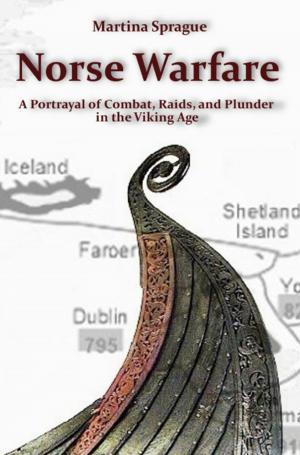Pike, Halberd, and Bayonet: Sharp Weapons in Near Modern and Modern Warfare
Knives, Swords, and Bayonets: A World History of Edged Weapon Warfare, #10
Nonfiction, History, Military, Weapons| Author: | Martina Sprague | ISBN: | 9781386717942 |
| Publisher: | Martina Sprague | Publication: | March 18, 2018 |
| Imprint: | Language: | English |
| Author: | Martina Sprague |
| ISBN: | 9781386717942 |
| Publisher: | Martina Sprague |
| Publication: | March 18, 2018 |
| Imprint: | |
| Language: | English |
The polearms used by pikemen constituted the first stage of a military revolution that would force a change in the tactics of warfare. The pike, a two-handed polearm with a long spear-like tip, originated in the fourteenth century and was carried by infantry soldiers as defense against charging cavalry. The halberd, too, proved a fearsome and pragmatic weapon used in the armies of medieval and post-medieval Europe. When supplemented by pikemen, halberdiers became a formidable force.
Pikemen would dominate the battlefield until the late 1500s when new technology led to the implementation of muskets and later bayonets. Early bayonets were long sword-like weapons which, like the pike, were originally used to ward off cavalry charges. Part of the bayonet’s utility rested with the fact that firearms were cumbersome to reload. If the initial firing failed to dispatch the enemy, a bayonet charge might prove necessary. Although the bayonet charge seldom, if ever, decided the victory, the bayonet proved useful in trench warfare in conjunction with other weapons such as a rifle and hand grenade.
This book begins with a discussion of the edged weapons that were the forerunners to the bayonet: the pike and the halberd. It then examines the physical drill and mental preparation required of the soldier to successfully engage an enemy combatant with the bayonet. Next it covers military operations in which the bayonet has served a primary function from the eighteenth century to modern day, followed by a study of the utility of the bayonet in the age of firearms, particularly in World War I. The concluding remarks focus on the popularity of the bayonet since its inception and the reasons why it survived as a weapon of the modern battlefield.
The polearms used by pikemen constituted the first stage of a military revolution that would force a change in the tactics of warfare. The pike, a two-handed polearm with a long spear-like tip, originated in the fourteenth century and was carried by infantry soldiers as defense against charging cavalry. The halberd, too, proved a fearsome and pragmatic weapon used in the armies of medieval and post-medieval Europe. When supplemented by pikemen, halberdiers became a formidable force.
Pikemen would dominate the battlefield until the late 1500s when new technology led to the implementation of muskets and later bayonets. Early bayonets were long sword-like weapons which, like the pike, were originally used to ward off cavalry charges. Part of the bayonet’s utility rested with the fact that firearms were cumbersome to reload. If the initial firing failed to dispatch the enemy, a bayonet charge might prove necessary. Although the bayonet charge seldom, if ever, decided the victory, the bayonet proved useful in trench warfare in conjunction with other weapons such as a rifle and hand grenade.
This book begins with a discussion of the edged weapons that were the forerunners to the bayonet: the pike and the halberd. It then examines the physical drill and mental preparation required of the soldier to successfully engage an enemy combatant with the bayonet. Next it covers military operations in which the bayonet has served a primary function from the eighteenth century to modern day, followed by a study of the utility of the bayonet in the age of firearms, particularly in World War I. The concluding remarks focus on the popularity of the bayonet since its inception and the reasons why it survived as a weapon of the modern battlefield.















